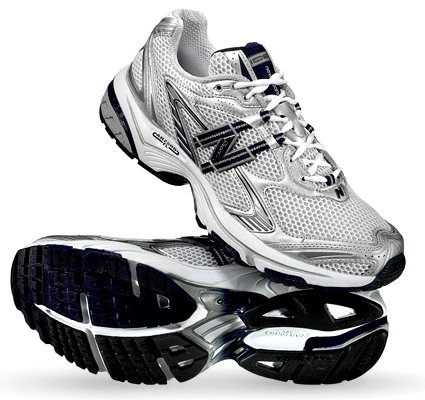Friction between the surface and bottom of the shoes is
important if the
runner wants to go anywhere.
For surfaces pertaining to sidewalks, roads,
and rocky areas the bottom of running shoes should be flat as there
would
be
enough friction between the shoe and ground for slipping not to occur.
Slipping
results in thermal energy instead of
going towards movement as the
following
equation implies:
W = F*d*cosθ where W is work
F is the force
θ is the angle between F and d
The bottom of the shoe is also flat because the surface area contact is larger.
http://shoes180.com/uploaded_images/Buy-Running-Shoes-763078.jpg,
21 Apr. 2009.

For surfaces pertaining to grass, dirt, or gritty areas the use of spikes on the bottom of the running shoe may be preferred as the spikes not only allow more area for friction to occur but it mostly allows for the runner to push off the ground without slipping easily due to the normal forces between the ground and the spikes.
Friction between the runner’s foot
and the inside of their shoe is also important.
http://shoes180.com/uploaded_images/Buy-Running-Shoes-763078.jpg, 21 Apr. 2009.
| Home |
Anatomy |
Friction |
Cushioning |
Pronation |
Bibliography |